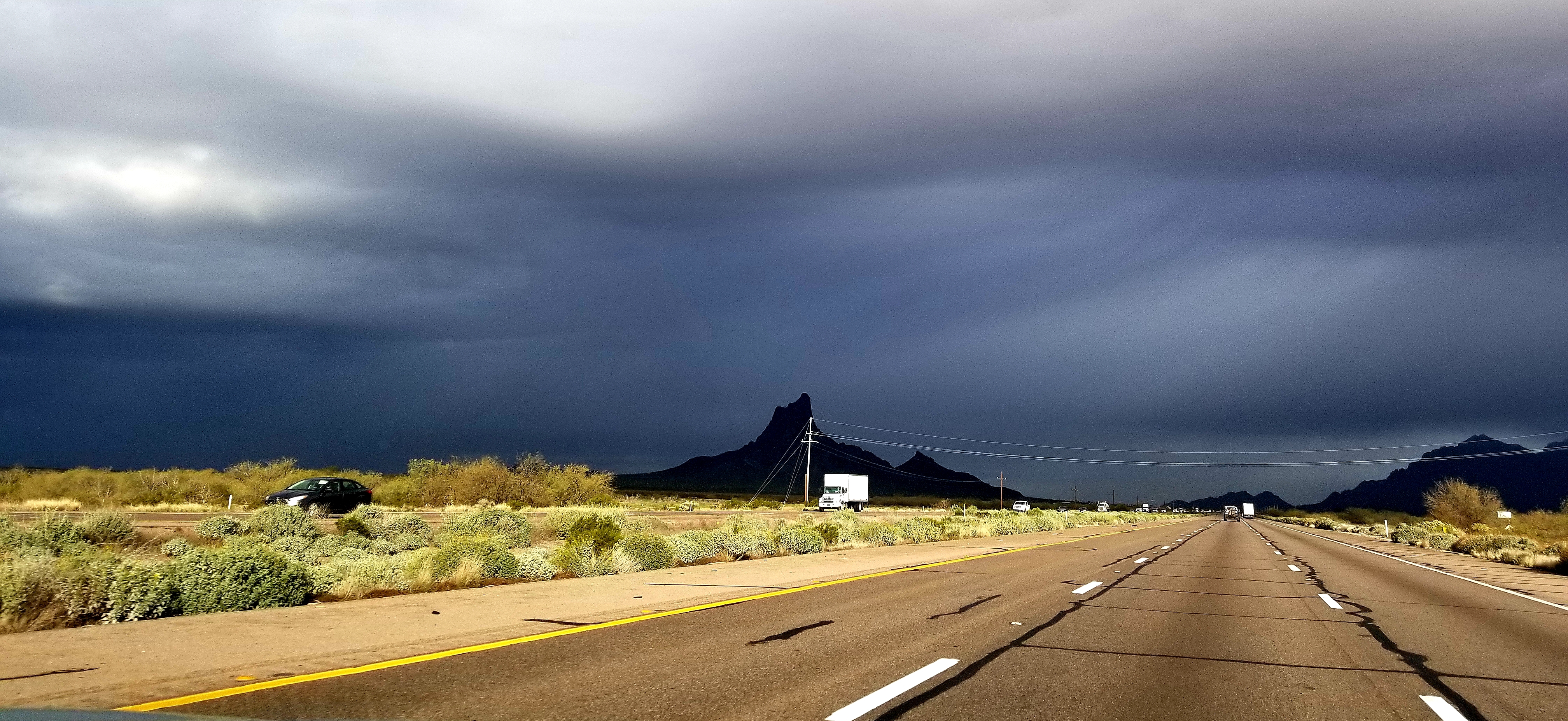Last week my wife and I drove to Tucson Arizona from Southern California. We set off from our home at 4 am to miss the daily commuter traffic. We envisaged an event free journey and we would make our destination in good time and within 7 and a half hours.
What we did not account for was the really heavy rain. Living in the UK, I had experienced my fair share of rain and was not concerned at all until I got on the freeway. Now driving 101 and common sense 101 states that you should drive within the conditions of the road and the conditions around you.
I did just that, I kept to a reasonable speed and at a further breaking distance than usual from the person in front of me (even though my car had new tires and my breaks were in great condition). The problems started to arise when some of the other drivers on the road were lane changing at great speeds, tailgating and not adjusting their driving to the conditions. The roads were slippery from all the oil and standing water. I actually aquaplaned for 2 or 3 seconds on more than one occasion and in that moment all you can do is take your foot off the gas and hold your line. Thankfully we were all right, but the driver a couple minutes earlier who had passed us at crazy speeds was now in the wall with his car bumper in the middle of the freeway.
Luckily we were able to pass, but I can guarantee from that one action, traffic would have backed up. Debris was in the middle of the road, this driver was blocking one of the lanes, and people were “rubber necking” which impacted a lot of other people. Unfortunately, this was not the only crash we saw that morning.
So how does this relate to finance?
It is very easy to spend money and often is a lot harder to earn it. There are times when we are in the “want”, “want” mode and start spending accordingly. It is very easy to spend. The easiest way is by credit card. A simple swipe, you don’t feel the pain of handing over cash and it is next month’s problem.
But what also if you have unexpected expenses like a dentist bill ($2,500) for a root canal or a set of new tires for your car, or a new refrigerator or a visit to the doctor because you have the flu or strep throat. The list is endless, but is your money?
With this in mind, consider saving some of your money first and then with whatever is left consider how you spend it.
A quick example:
You earn $1000 a month. You take $100 of it and put it into a savings / unexpected bills fund. You now have $900 to spend. Meanwhile your $100 is accruing each month. By the end of the year you have $1200 to cover costs or to save. Over time you will not notice the $100 coming out and your spending will not be as disrupted as you think.
By taking a preventative approach to your money, you will have money in your reserve and you are less likely to overspend.
Have you ever heard of the phrase “measure twice , cut once” – sometimes taking that little longer will actually save time and money. We certainly did when we were on the Highway. Unfortunately, the fool who was speeding was late and it cost money and inconvenienced a lot of people. Insurance premiums and costs is a whole other post.
So, next time you go to spend your money, think about your expenses first before handing over your hard earned money. Think about whether you are getting the best deal for your dollar and when spent will need to be replaced. Always think – Was that dollar spent, worth my time and effort?
If you want to practice saving and using a credit card effectively or see how your money habits stack up, check out our free personal finance game CashCrunch 101. Will you hit Platinum?


